As we fade into the depths of summer heat, foraging can be a little thin within city limits, but there is one delight that just seems to be every where this time of year: Elderberry flowers. And what better way to pair the sweet and subtle flavor of those flowers with a cordial.
Elderberry is a large shrub, and can even grow into a small tree. The leaves are a lush dark green, slightly serrated on their edges, and each leave should be opposite to another. The flowers are cream-colored, not white with a sweet fragrance. A good rule to live by is to not take more than a few flower heads from each elderberry bush: this ensures that the bush will have enough to spread itself and makes you find more bushes (it’s never a good thing to have only one spot for anything you forage for) and, most importantly, selective picking means you can come back in a few months for the berries. For best cut flowers pick either in the morning or evening.
In the ol' USofA, the term "cordial" usually refers to an alcoholic liqueur. Whereas in other parts of the world, it's just a sweetened concentrated fruit syrup that is added to water or sparkling water to make a refreshing beverage. Elderflower cordials mix well with almost everything, adding a floral sweet smelling syrup to champagne or seltzer water, or better yet a martini. It has a delicate scent, very sweet and just a lil' bit spicy.
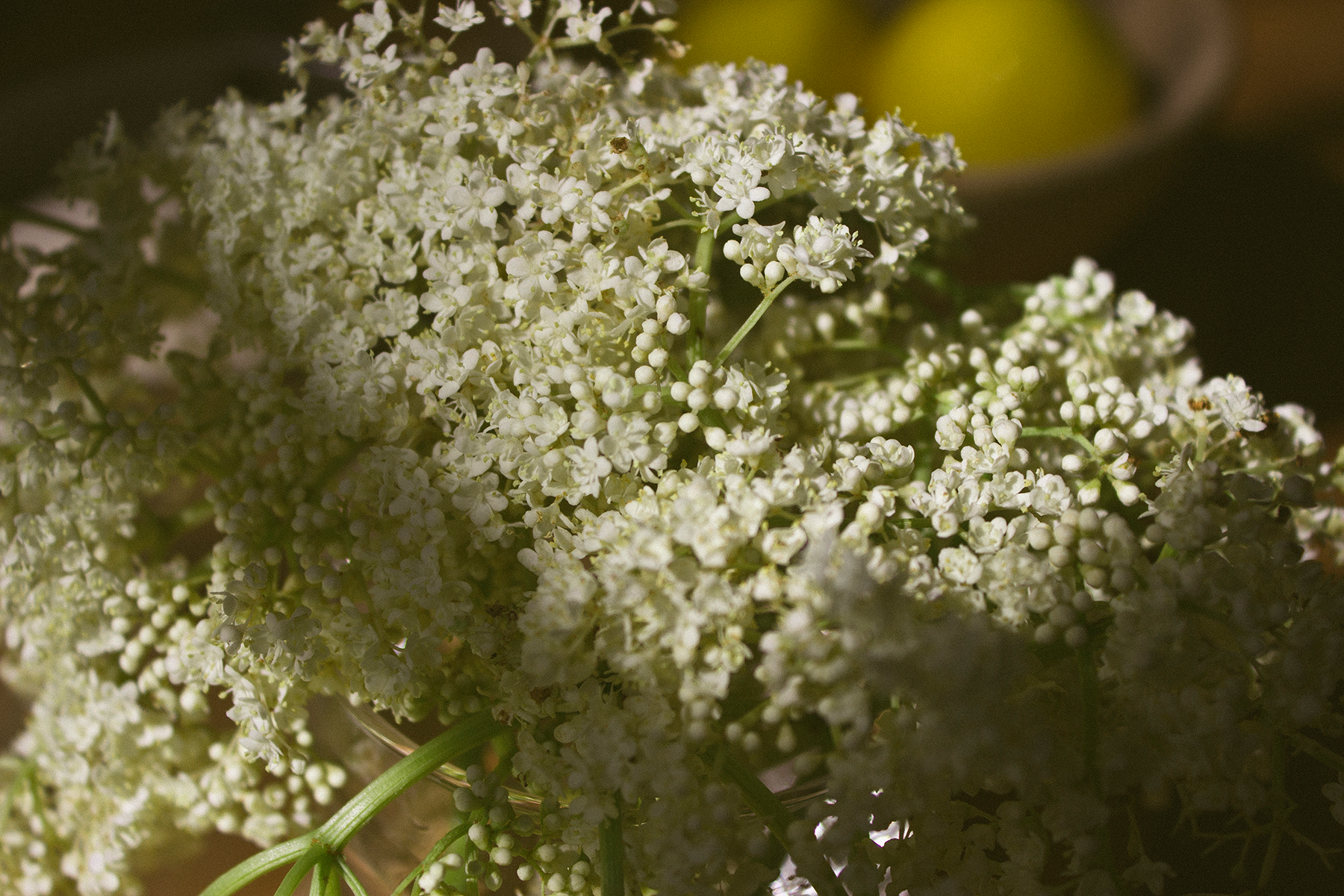
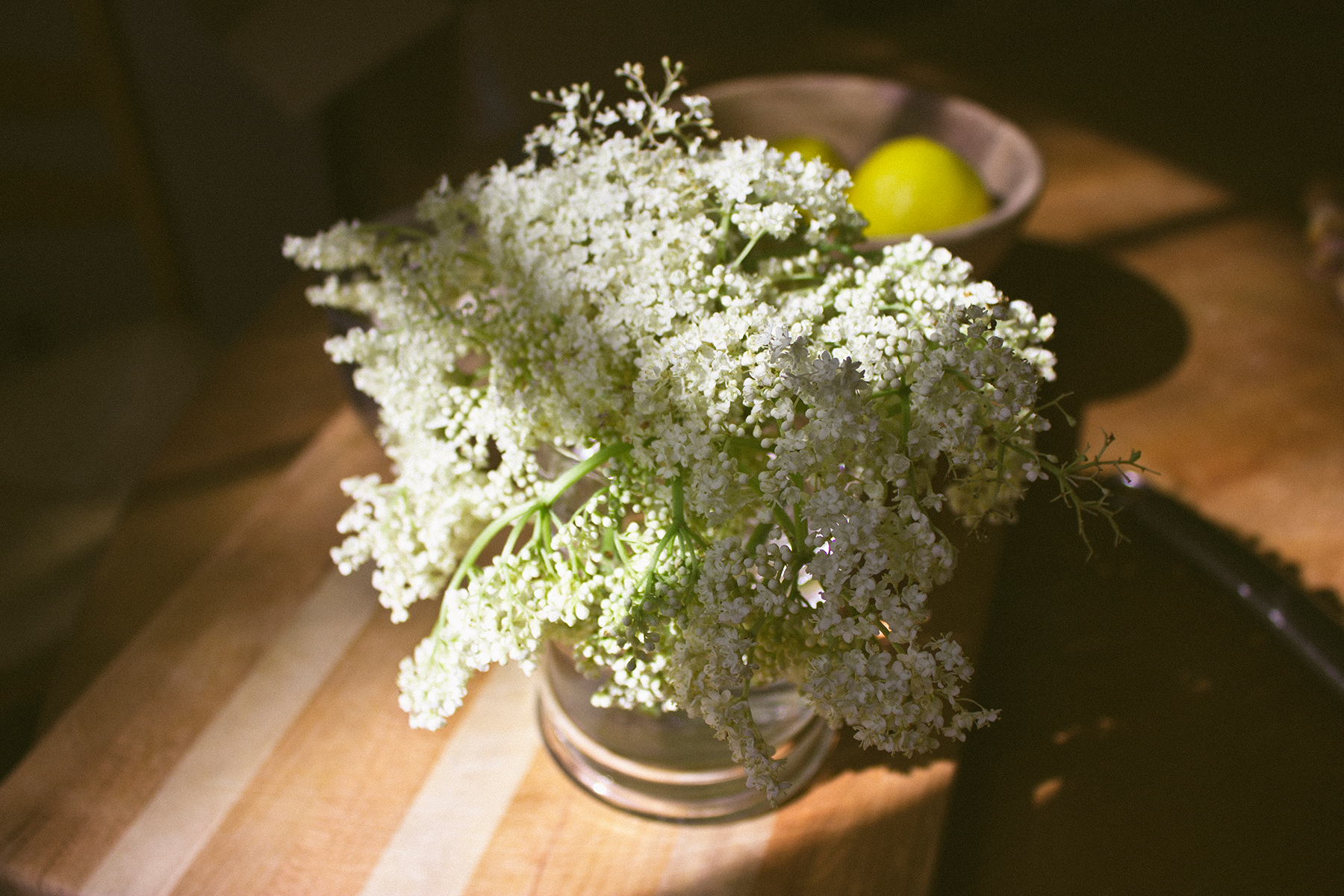
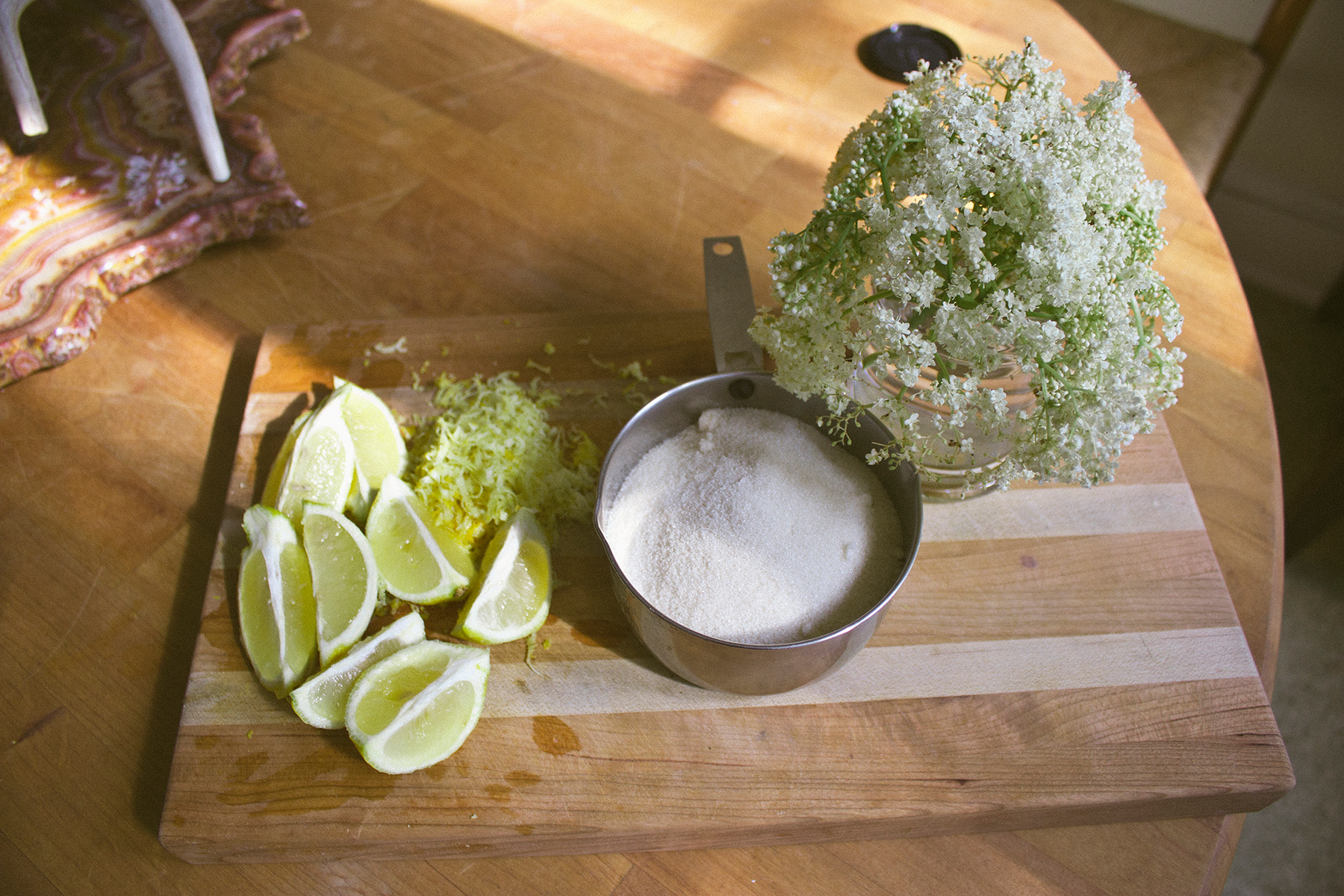
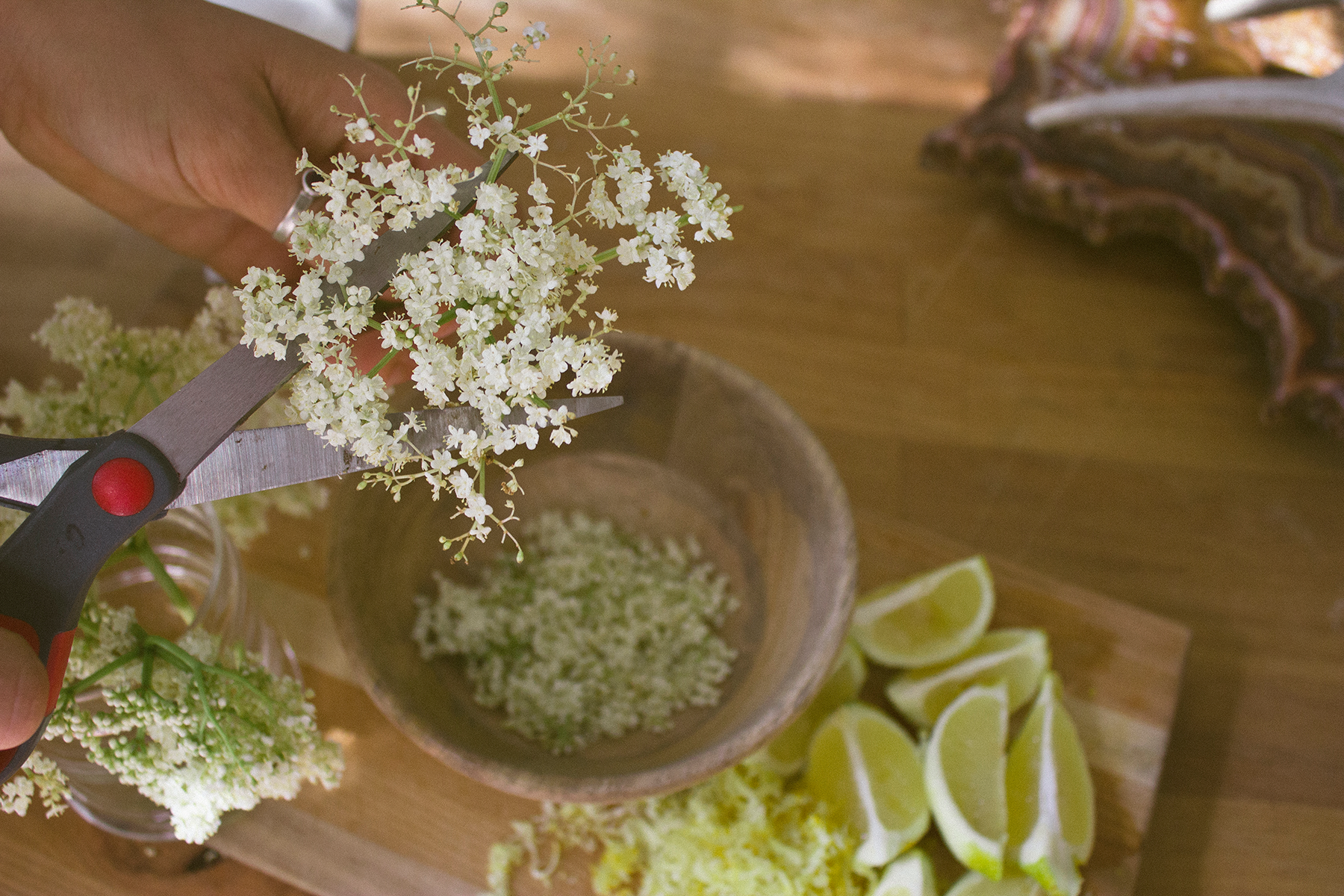

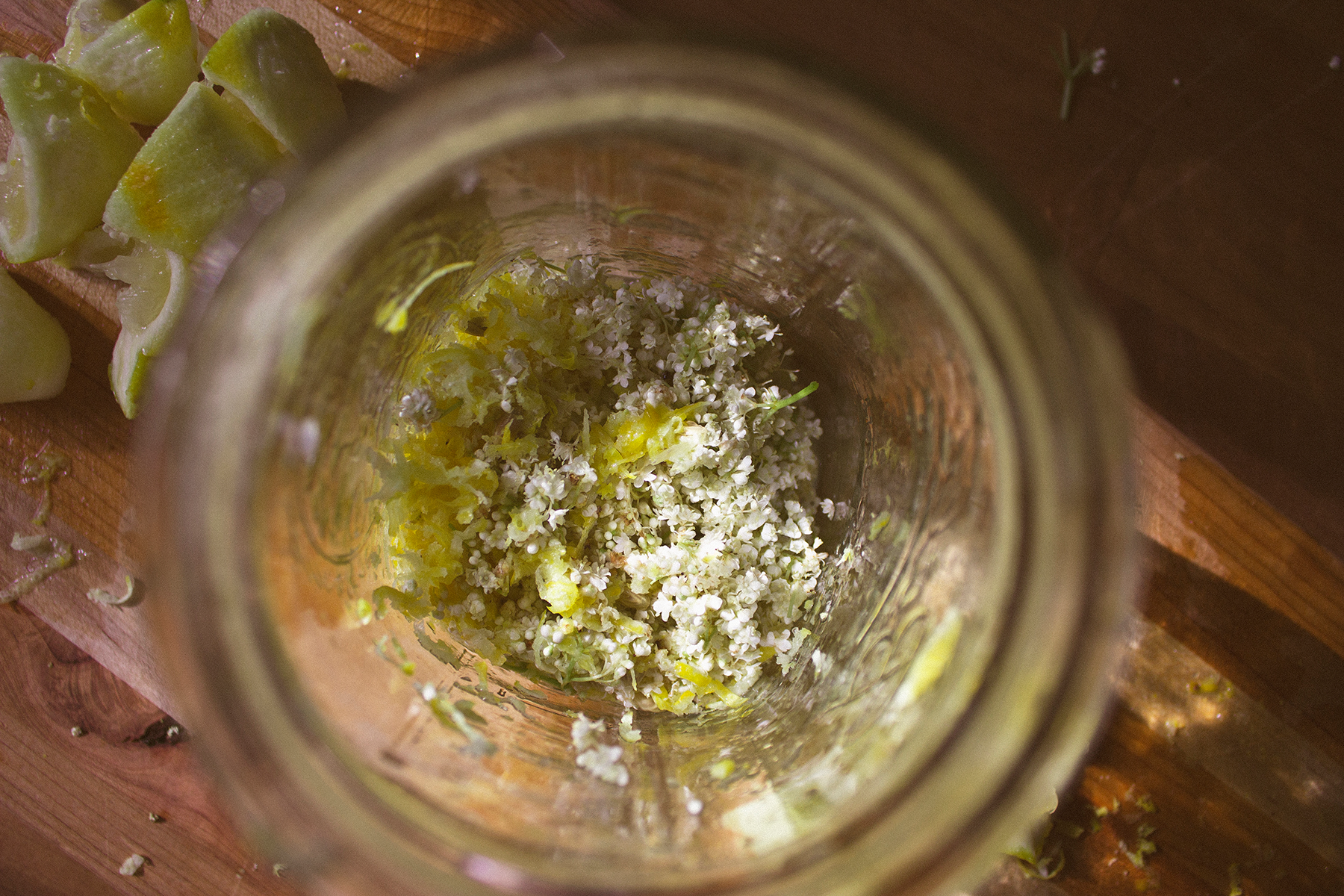
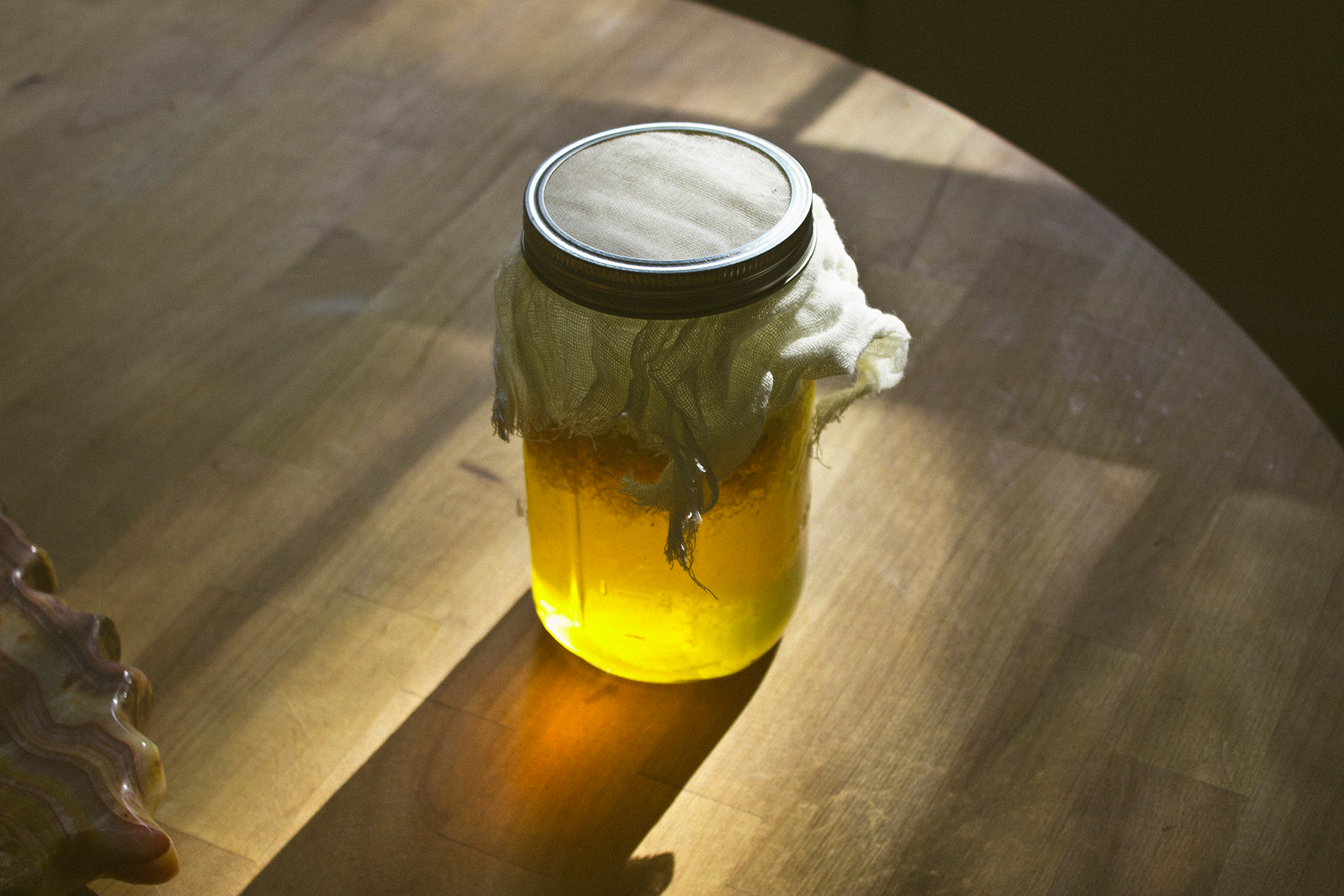
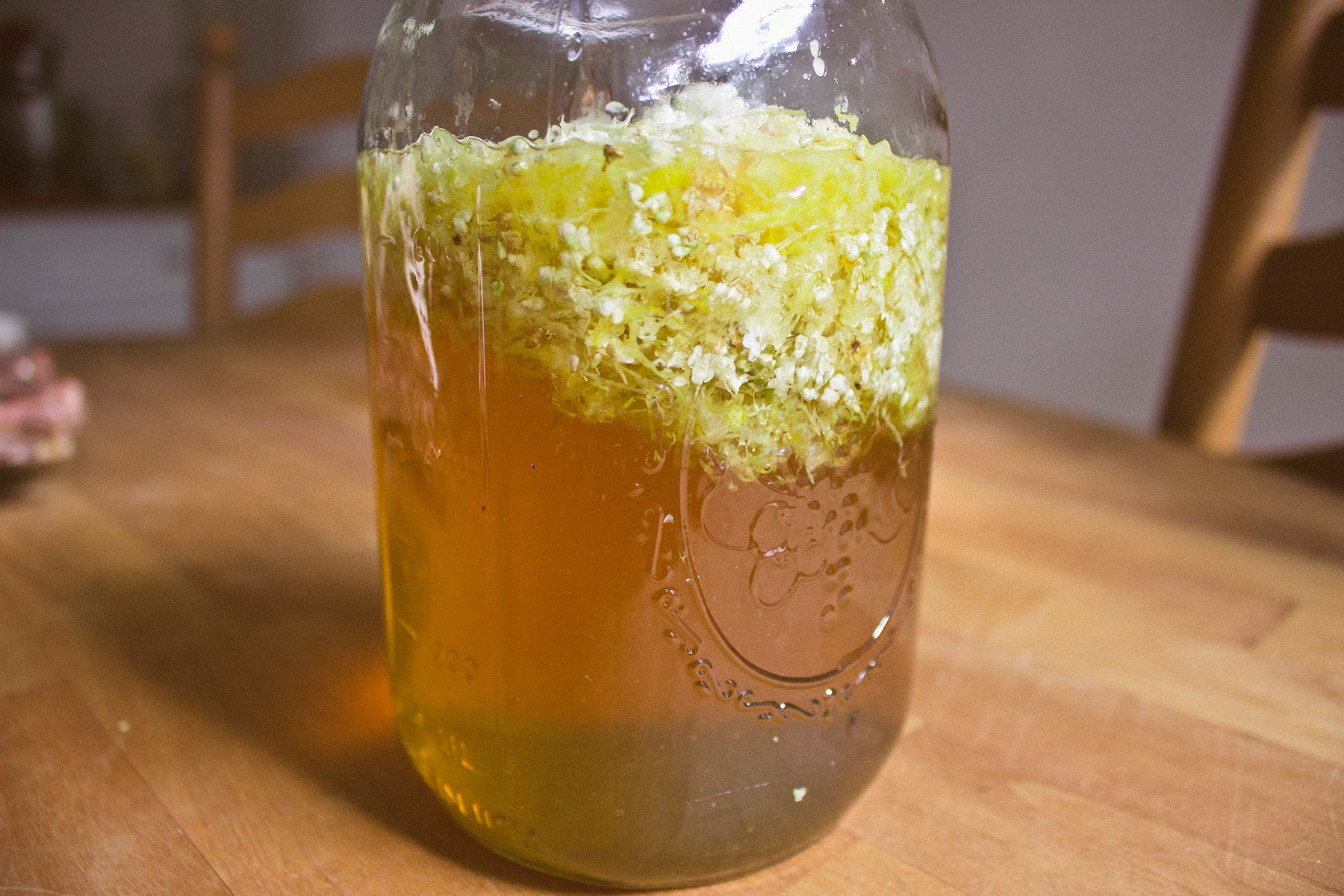
Ingredients:
1 pint water
2 cups sugar
Juice and zest of 2 lemons
12 elderflower heads, stems removed (about 1 cup of flowers)
Note: For longer shelf life use citric acid in your cordial as a preservative to reduce the fermentation process. We used twice as much lemon in the recipe instead. This method does the job, but imparts a slight lemon flavor, which i think compliments the elderflower flavor. Also note: cutting board made by bloom's #1 handy man marshall hawthorne <3
Method:
Snip off the flowers from the stalks into a quart sized mason jar. Try to remove as much of the stems as you can because they are toxic. A few stray bits of stems will not hurt you, but you want to minimize that.
Zest the lemons and add it to the jar along with the lemon juice.
Bring the sugar and water to a boil, stirring occasionally to dissolve. Let the syrup cool to room temperature. Pour the syrup over the flowers, lemons et al and stir to combine. Cover the jar with cheesecloth and let sit for 2-4 days.
When ready, strain it through the cheesecloth into another clean jar. Seal the jar and store in the fridge.
